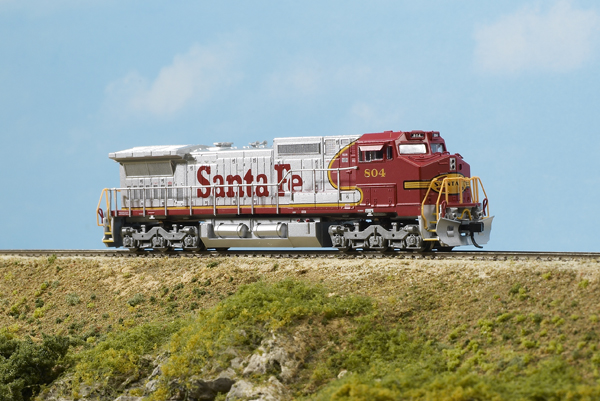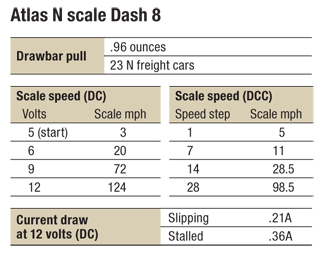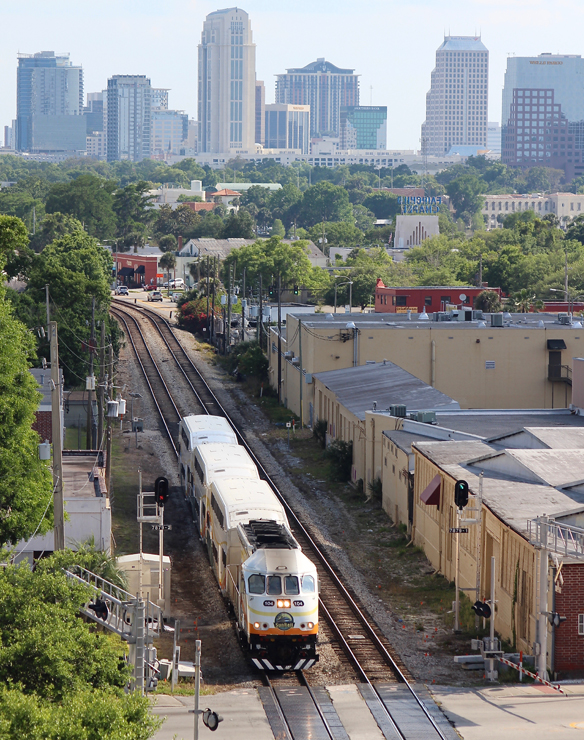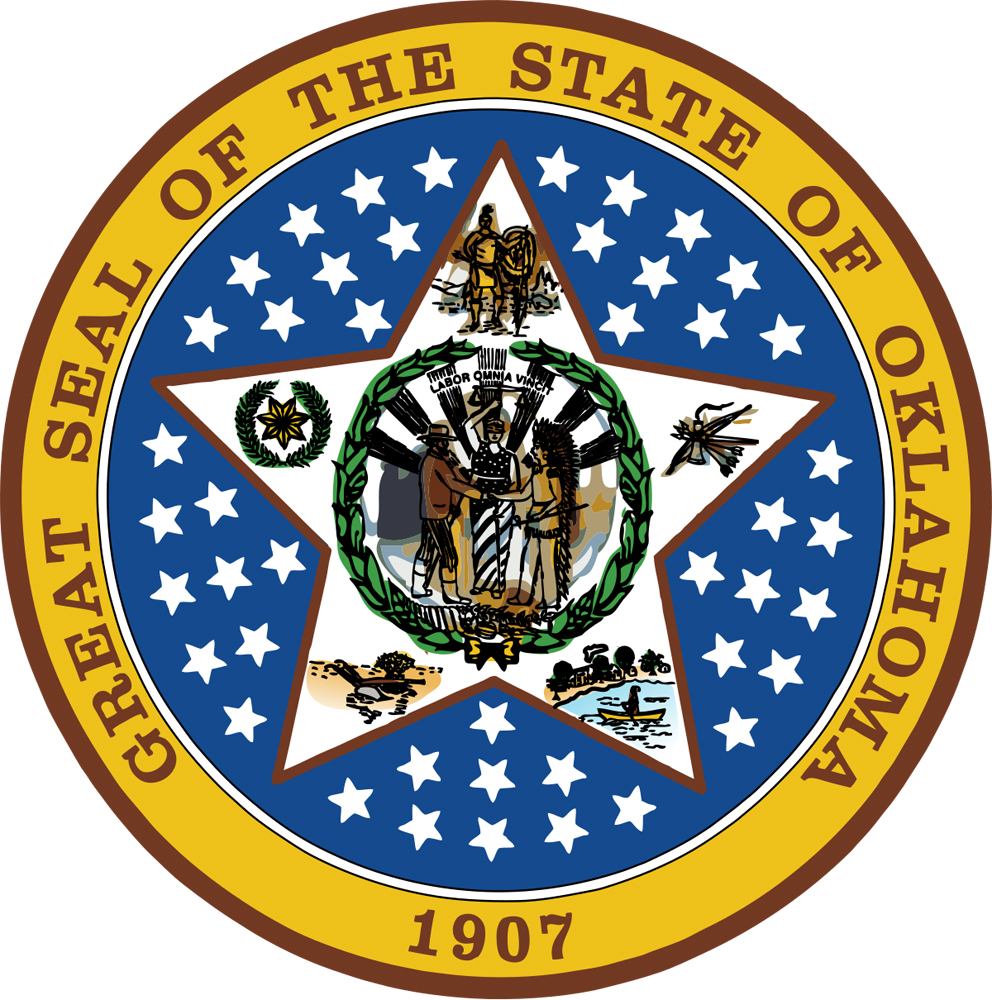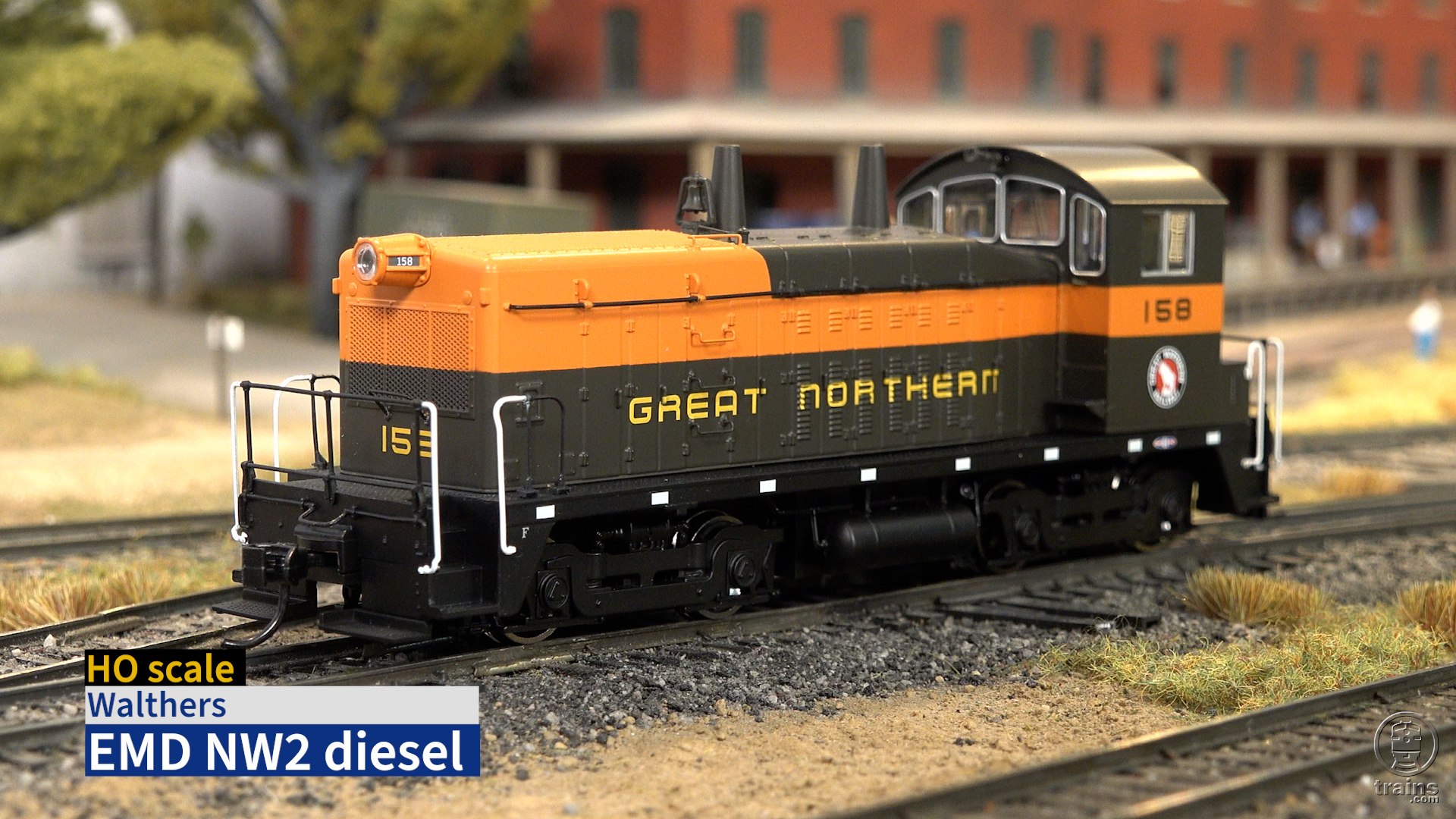The prototype. Seen by some railfans as the first third-generation diesel locomotive, the Dash 8-40CW – usually referred to by its owners as C40-8W – was built at GE’s upgraded Erie, Pa., plant starting in December 1989. What made the Dash 8 series so revolutionary, and allowed GE to outsell rival Electro-Motive Division for the first time in its history, was the marriage of the high-horsepower 7FDL16 engine and 752AH traction motor with computerized controls.
The “C” in C40-8W denotes three powered axles per truck, while the “40” refers to the locomotive’s 4,000-hp engine. The “W” stands for “wide,” referring to the North American Safety Cab. The locomotive was GE’s first to have that cab, which was distinguished from the slightly earlier Canadian Comfort Cab by different front windshields and nose profiles.
Union Pacific, which was the first railroad to order the C40-8, was also the C40-8W’s first buyer, receiving the first of 50 in December 1989. Conrail bought 50 of the wide-nosed units in 1990, and others were later sold to CSX and the Atchison, Topeka & Santa Fe. Atlas offers its model in all four road names, with three road numbers each. Our sample came painted in the Santa Fe’s red-and-silver warbonnet scheme.
Outside and in. With its wide cab and flying-wing radiator enclosure, the Dash 8-40CW cuts a distinctive figure on the rails. Atlas captures that look with a finely molded plastic body shell that matches the dimensions of prototype drawings in the September 1997 issue of Model Railroader.
The paint on our sample is crisp, with sharp and even yellow-and-black striping separating the red and silver portions. The livery matches photos of Santa Fe no. 804 that I found on the Internet, down to the numerous tiny warning signs on the sills and access doors. Those signs bear some of the smallest legible print I’ve seen on a model. The large “Santa Fe” on the sides of the hood, however, has a number of voids where the lettering crosses panel edges or door handles.
The flexible plastic handrails are two N scale inches in diameter. Other details include the separately applied bell and horns, cab sunshades, m.u. hoses, coupler cut levers, and wire nose grab irons.
The magnetic knuckle couplers are body-mounted, so I was able to lift off the shell without having to remove any screws. In the middle of the split die-cast metal frame is an open-frame, five-pole, skew-wound motor with dual brass flywheels. Power is transmitted to the middle axles of both trucks by brass worm gears, and gears on those axles drive the other wheels. All 12 chemically blackened metal wheels also pick up electricity.
The DCC decoder rests in a recess on top of the frame. Plastic light rods conduct light from light-emitting diodes (LEDs) on both ends. A small separate circuit board on the front of the frame has two surface-mount LEDs that, through a similar arrangement, illuminate the ditch lights. These can be controlled with the DCC throttle to be on, off, or blink alternately.
I tested the locomotive both under direct current and Digital Command Control. In DC, the locomotive started moving about 5 volts (V), rolling at a respectably slow 3 scale mph. At 12V, the model topped out at 124 scale mph, considerably higher than the locomotive’s 70 mph upper limit.
When I tried the model in DCC, it didn’t start moving until the throttle reached speed step 7. After I programmed the decoder’s starting voltage (Configuration Variable 2) to 55, it rolled steadily at 5 mph at speed step 1. At speed step 28, it reached 98.5 mph. I also tried it with the throttle set to 128 speed steps, which gave me more control at low speed.
I also tested a few other DCC functions, changing the decoder’s address to the cab number and turning the lights on and off.
Atlas’ new Dash 8-40CW would be a fine addition to a modern diesel roster. Two or three of these sharp-looking models would look great hauling a long intermodal train on a contemporary layout.
Price: Direct-current model, $139.95; with Digital Command Control, $179.95
Manufacturer
Atlas Model Railroad Co.
378 Florence Ave.
Hillside, NJ 07205
www.atlasrr.com
Road names: Atchison, Topeka & Santa Fe (red-and-silver warbonnet); Conrail (“Quality” scheme); CSX; and Union Pacific. Also available undecorated, in three body styles.
Era: 1989-present
Features
Accumate magnetic knuckle couplers (body-mounted, at correct height)
All-wheel drive and electrical pickup
Blackened wheels (in gauge)
Directional light-emitting-diode lighting
Ditch lights (controllable in DCC)
Five-pole skew-wound motor with dual brass flywheels
Weight: 3.2 ounces
Wire grab irons on top of nose (molded on elsewhere)





